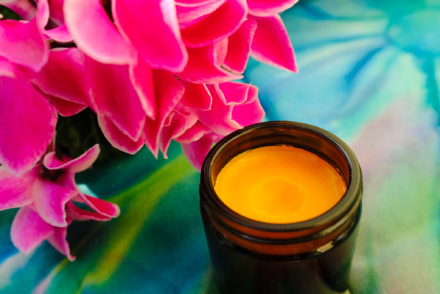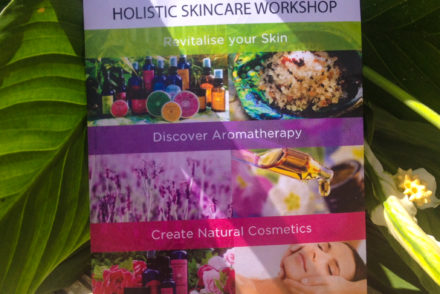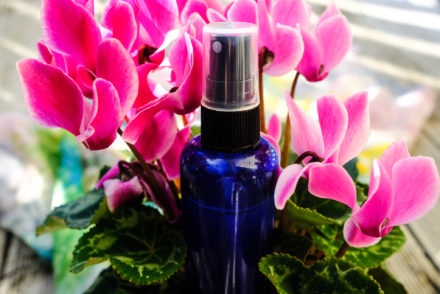Allergies can be referred to as a disorder of the immune system. Pollens from trees, flowers, plants end up in our eyes, nose, throat, and lungs. The immune system thinks that the “invading” pollen is harmful and launches an antibody reaction against it. This triggers histamine release, producing an allergic reaction. Our immune system can react in the same way to dust, chemicals, mold, animal fur, food and others. Most common allergies are those associated with IgE mediated hypersensitivity such as hay fever, atopic dermatitis and allergic asthma.
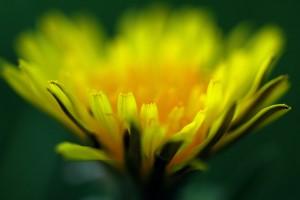 Few years ago I started to suffer of allergies. Firstly, I have mistaken allergy symptoms with common cold, as those overlap:
Few years ago I started to suffer of allergies. Firstly, I have mistaken allergy symptoms with common cold, as those overlap:
– swelling of the nasal mucosa,
– sneezing,
– runny nose,
– reduced sense of smell,
– itching of the eyes, throat
– hypersecretion of mucous among others.
I also felt mentally and emotionally down.
I went to see a doctor and was told I would have to live with the allergies for the rest of my life. I was prescribed different antihistamines, because not all would always work. The side effects of taking that medication included sleepiness, lack of concentration, lethargy and moodiness. After about 2 years I started to understand that I didn’t want to live like that anymore – allergies took control over my life.
I decided to change my lifestyle – started to get enough sleep, avoided food that could aggravate the symptoms, practiced yoga and ate nutritious food. My health slowly started to improve. It wasn’t until 2013 when I discovered Aromatherapy. I used essential oils in inhalations, oils and baths. I also had regular massages with essential oils. It was a long process of recovery and there were moments when I wanted to give up. Gladly, I didn’t.
Ten years later I am allergy free, naturally.
Bodymind dialogue
– Mental/emotional factors –
Factors that aggravate allergies include poor diet, damp weather, humidity and air conditioning and emotional upsets. I would like to focus for a moment on the latter.
Deb Shapiro in her book ‘Your body speaks your mind’ asks some very important questions:
“Is something causing this emotional outpouring?”
“Are you sneezing because you are really feeling nervous?”
“Are you blocking something within yourself, getting stuffy and airless in your attitude?”
“What do you need to do to open up and breathe freely again?”
If you wish, take some time off and answer these questions. They might help you to look at the problem from different angle and give you a valuable insight into your thoughts and emotions.
Essential oils with anti-depressive and sedative properties can relieve the symptoms of your allergies such as Frankincense, Melissa or Roman chamomile among other oils.
Aromatherapy – natural remedy for allergies
Aromatherapy can offer a safe, inexpensive and self-empowering alternative to/or support traditional treatments.
Essential oils for allergies
Hay Fever
Known as Allergic Rhinitis results from exposure to antigens mentioned above.
| Essential oils: *Bay laurel, Cajeput, Cedarwood, Cypress, Everlasting, Frankincense, *German and roman chamomile, *Eucalyptus globulus and radiata, *True Lavender, *Spike Lavender, Melissa, Myrtle, **Peppermint, Pine, Ravensara, **Rosemary, *Thyme, Tea tree, *Yarrow, Sandalwood |
**Avoid these oils if you are taking homeopathy remedies or if you are pregnant
* Avoid these oils if you are pregnant
I agree with Patricia Davis who suggest that any essential oil that can relieve the symptoms of common cold will help to relieve the symptoms of hay fever. In general, essential oils with anti-inflammatory, antispasmodic, expectorant and antihistaminic properties will help.
Each of us is different therefore always choose a blend of essential oils according to your physical, mental, emotional and spiritual state. I would recommend trying different oils and see which one works best for you.
Allergic asthma
Steam inhalation should be avoided by asthmatics as it can trigger the symptoms. Chest and feet massage can be an excellent alternative for asthmatic sufferer. Inhalation of the oil directly form the bottle is recommended. You can also apply 1 drop of oil to the palms, rub together gently and inhale deeply.
Battaglia (2003) suggests the following essential oils:
| Aniseed, Atlas cedarwood, Cajeput, Clary sage, Roman chamomile, Cypress, Sweet fennel, Frankincense, Everlasting, Eucalyptus radiata, Hyssop var. decumbens, Lavender, Spike lavender, Pine, Lemon, Mandarin, Myrtle, Niaouli, Peppermint, Petitgrain, Rosemary |
Diffuser/ humidifier
It fills a room with aromatic vapours. And here is when the magic starts. Air we breathe in contains microscopic particles of chosen essential oils. The therapeutic benefits are numerous such as improved breathing, mood enhancement, better sleep patterns and stress reduction, improved concentration depending on the particular blend of aromatic oils that you use.
Steam inhalations
A 5-minute steam inhalation with two drops of an essential oil will break down mucus, reduce inflammation and help open the sinuses. According to Battaglia (2003) Eucalyptus radiata is preferred over Eucalyptus globulus for upper respiratory concerns in children and the elderly. Aromatherapy oil inhalation can be used as a safe and effective intervention to alleviate PAR (Perennial Allergic Rhinitis) symptoms and improve quality of life among the patients. It also has potential for improvement in sleep quality.
Tip! Repeat the inhalation every few hours to bring rapid relief from the inflammation and congestion. Steam inhalation will improve your concentration and allow you to carry on with daily tasks or help you sleep better.
Almost all essential oils are antiseptic; some are antifungal or antiviral. If you suspect the cause of sinusitis is fungal, add an appropriate essential oil such as Melaleuca alternifolia (Tea tree) or Cymbopogon citratus (Lemongrass). If you suspect the culprit is viral, add an essential oil such as Cymbopogon martini (Palmarosa) or Ravensara aromatica (Ravensara).
One of my favourite essential oils for use in steam inhalation is Lemon (Citrus limon). Its light, fresh and sweet odour simply makes me feel good.
SAFETY – Steam inhalations need to be avoided by people suffering of asthma.
Facial massage
When tolerable, massage your face with special attention to the area around the nose. It will help to drain away excessive mucous. Prepare a blend of oils with anti-inflammatory and expectorant properties :
Helichrysum italicum (Helichrysum) – 1drop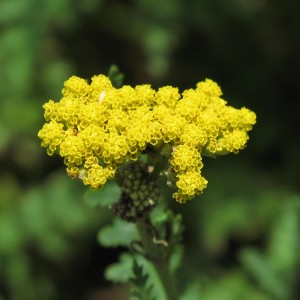
Boswellia carteri (Frankincense) – 1 drop
Eucalyptus globulus (Eucalyptus) – 1 drop
5ml of any carrier oil i.e. Apricot Kernel oil
Baths
Tension and stress – triggers of allergies can be reduced by using aromatherapy oils in the bath. Essential oils added to a bath on contact with warm water will evaporate and reach nasal airways enabling you to breathe deeper and easier. Always dilute essential oils in a carrier oil or full-fat milk. Essential oils are not water-loving (hydrophilic) therefore do not dissolve in water and stay on water’s surface making your skin prone to sensitization.
Aromatherapy massage
It can be very beneficial especially if your allergy is aggravated by stress, anxieties, and emotional upheavals. Chest, back massage or full body massage are wonderful ways to help you to relax and de-stress. The combined benefits of essential oils with therapeutic massage offer a pleasurable and yet very effective method of promoting wellbeing and vitality. Together they enhance the circulation of blood and lymph and therefore aid detoxification, relax and tone tense muscles of respiratory system, and encourage deeper breathing. It also slows down the rate of respiration due to the reduced stimulation of the sympathetic nervous system.
Nutrition
I wish to discuss some natural remedies that brought a relief to my allergy symptoms in the last few years.
Quercetin – this flavonoid, found in red wine, grapefruit, red onions, and apples among others, and available in supplement form, acts directly to inhibit histamine release. Not recommended during pregnancy or nursing though some practitioners feel it is safe after the first trimester.
Vitamin C – is immonostimulant, anti-inflammatory and has antihistamine activity. Perhaps the easiest way to increase your vitamin C intake is through citrus fruits. With as much as 2,500 mg per 100 grams, Rosehip is another excellent source of C. Rosehip tea is an easy way to increase your vitamin C intake.
Ginger – naturally relieves the chest and nasal congestion associated with the condition. It also helps loosen phlegm, strengthens the immune system, and functions as a natural antihistamine. Try making some ginger tea at home.
Black cumin – helps by combating the root of the problem – stabilizing the immune system. It relaxes the airways and reduces the release of antihistamines into the bloodstream. Take a teaspoon of black cumin oil 3 times a day for few weeks for best results.
Black cumin inhalation
2 tsp of Black Seed oil
2 drop of chosen essential oil
1 litre boiling water
Allow the mixture to steep for about 5 minutes. Relax and breathe in the steam deeply for about 10 minutes.
Honey – is said to cure hay fever because the bee pollen in honey can desensitise your body to other pollens. Increasing honey in your daily dietary intake should reduce hay fever symptoms significantly. Make sure you use local raw honey to your area to see the best results.
Apple Cider Vinegar – The theory is that its ability to reduce mucous production and cleanse the lymphatic system makes it useful for allergies. I mixed a teaspoon of organic, unfiltered apple cider vinegar with “The Mother” (that part is important) into a glass of water and drank this three times a day.
Probiotics Allergies are the result of an imbalance in the immune system that causes the body to react too strongly to a stimuli. New research links the presence of beneficial bacteria in the gut with reduced incidence of allergies.
Anti-histamine Foods That Fight Inflammation And Stabilise Mast-Cells
If you have histamine intolerance, mast-cell activation disorder, or any other inflammatory disorder, you might be interested in anti-histamine foods that fight inflammation and stabilise mast-cells naturally.
Herbal teas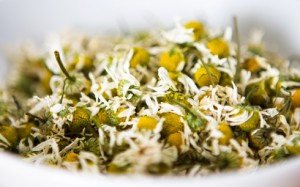
Chamomile and Lavender tea have anti-inflammatory properties and can calm overactive nervous system. Chamomile tea can also be used as an eye compress. The compress provides a cooling effect to swollen, red eyes caused by hay fever and reduces irritability considerably.
Nettle – Stinging nettle extract is a natural antihistamine that can help to reduce allergy symptoms. Talk to your health care practitioner if you take blood pressure medication, blood thinners, or water pills, have diabetes or are pregnant before taking nettle supplementation.
ChildrenTalk to your doctor before giving Stinging Nettle to a child, so the doctor can determine the proper dose. Adults Stinging nettle can be used as teas, tinctures, fluid extracts and creams, and freeze dried leaf capsules.
Therapeutic strategy
Avoid or reduce exposure to the allergen.
Improve immunity. Exercise regularly. Go for a walk, practice yoga, dance. Aromatherapy may strengthen your immune system. There are essential oils that have been described as immunostimulants such as Boswellia carteri (Frankincense), Eucalyptus species, Melaleuca species among others.
Minimize stress in life. It’s not a coincidence, your emotions may have been the trigger. Researchers are now finding that certain allergic disorders like hay fever, eczema and asthma are regulated, in part, by hormones and brain chemicals released into the bloodstream in response to stress.Try relaxation techniques such as meditation, listen to ambient music.
Well balanced diet. Avoid or reduce dairy products, especially cow’s milk (this increases production of mucous), alcohol, coffee, red meat. Diet should be rich in fresh, raw fruit, vegetables, Omega 3 and grains. Drink plenty of fresh still or sparkling water according to personal preferences.
Tip! Wear anti-hay-fever mask made out of non-woven material, which is more effective in blocking pollen. Put a drop or two of Chamomile, Lavender essential oil on your mask when you wear it. Instead of smell of fumes floating on the streets you will get to breathe your favourite plant.
Safety note: Because the appropriate amounts of the right supplements must be determined on individual basis, anyone planning a supplement regimen should consult with a naturopathic physician or other qualified health care practitioner. Always check with your aromatherapist if essential oils that you want to use are safe and appropriate.
If you live in Wellington, NZ and are looking for natural allergy relief – contact me on (+64) 0210778203 or shamamatherapy@gmail.com
Balch, J. Balch, P. Prescription for nutritional healing Avery Publishing Group, USA, 1997
Battaglia, S. The complete guide to aromatherapy 2nd edn The International Centre ofHolistic Aromatherapy, Australia 2003
Mittman P. Randomized, double-blind study of freeze-dried Urtica dioica in the treatment of allergic rhinitis Planta Med. 1990 56(1):44-7.
Price, S. Price, L. Aromatherapy for health professionals 2nd edn, Churchill Livingstone, UK, 1999
Roschek B Jr, Fink RC, McMichael M, Alberte RS. Nettle extract (Urtica dioica) affects key receptors and enzymes associated with allergic rhinitis Phytother Res. 2009 23(7):920-6.
Schleicher, P. SalehBlack, M. Cumin: The Magical Egyptian Herb for Allergies, Asthma, and Immune Disorders Heling Arts Press, Vermont 2000
Umetsu DT Asthma: an epidemic of deregulated immunity Nature Immunology. 2002; 3:715-20
Wright, R. Rodriquez, M. Cohen, S. Review of psychological stress and asthma: an integrated biopsychosocial approach. Thorax 1998; 53: 1066-1074
Wright, RJ. Cohen, RT. Cohen, S. The impact of stress on the development and expression of atopy. Current Opinion in Allergy and Clinical Immunology 2005 Feb; 5(1): 23-29




